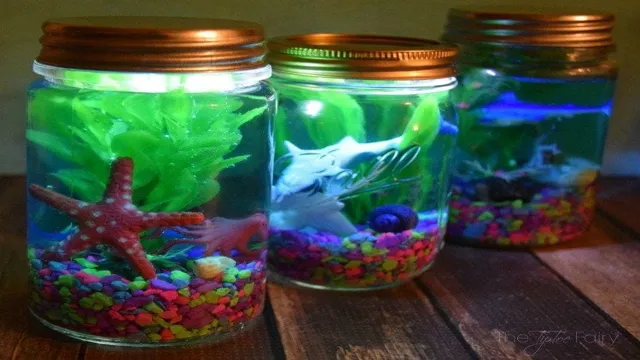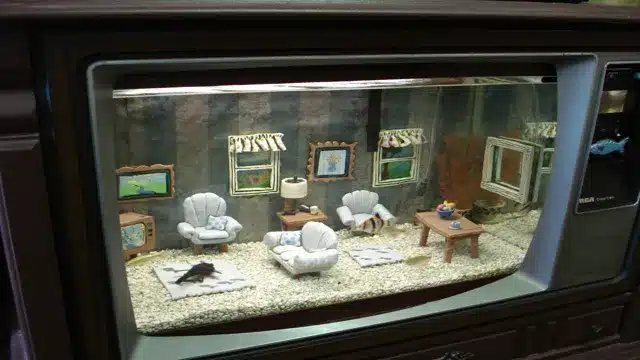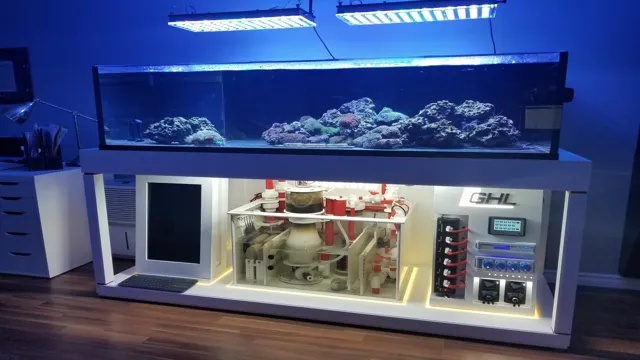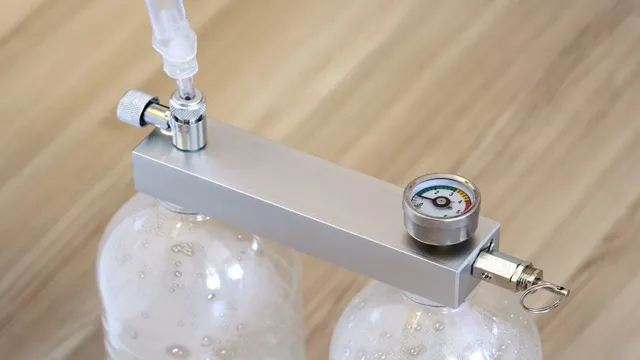Keeping an aquarium is one of the most rewarding hobbies that anyone can take up. However, with great reward comes great responsibility. The proper maintenance of an aquarium can mean the difference between a healthy and thriving underwater ecosystem and a murky, lifeless mess.
One of the most common problems that aquarium enthusiasts face is the buildup of algae on their plastic aquarium surfaces. Algae can harm the plants and fish in your tank, making it crucial to regularly clean and maintain it. In this step-by-step guide, we’ll show you how to easily and effectively clean algae off your plastic aquarium so you can keep your aquatic environment looking its best!
Gather Your Supplies
Cleaning algae off plastic aquariums can be a daunting task, but with proper tools and guidance, it can be done effortlessly. First, gather your supplies. You will need a algae scraper, a soft-bristled brush, a small bucket, aquarium-safe cleaning solution, and a microfiber cloth.
Ensure that the scraper is designed for plastic surfaces as using the wrong one could scratch your aquarium’s surface. The soft-bristled brush will also be used to scrub off stubborn algae remaining after using the scraper. The small bucket will be used to mix the cleaning solution with water, while the microfiber cloth is excellent for wiping off any residual algae.
You may also consider using protective gloves to prevent any skin irritation from handling the cleaning solution. With these tools, you’re all set to tackle the algae build-up in your plastic aquarium!
What You’ll Need
To get started on your project, you’ll need to gather some essential supplies. First and foremost, you’ll need the tools specific to your project. For example, if you’re planning on painting a room, you’ll want to make sure you have paint brushes, rollers, paint trays, and painter’s tape.
Additionally, you’ll need to make sure you have the necessary materials. If you’re painting, you’ll need paint, drop cloths, and cleaning supplies. Other projects may require different materials such as wood, screws, nails, or sandpaper.
Something to consider is the quality of your supplies. Higher quality tools and materials can mean better results and a longer lasting final product. Don’t skimp on quality if you want long-term satisfaction with your project!
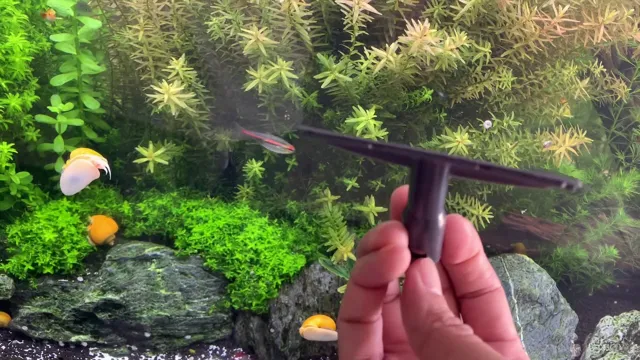
Where to Find Supplies
When it comes to creating crafts, gathering supplies is half the fun! There are a variety of places where you can find the materials you need to bring your projects to life. The most obvious choice is your local craft store, where you’ll find endless aisles of paper, paint, yarn, beads, and more. If you’re looking for more unique or specialized items, online retailers like Etsy or Amazon can be a great resource.
Another option is to hit up thrift stores or garage sales for gently used materials like fabric or buttons. Don’t forget about the outdoors either! You can find twigs, leaves, and other natural materials for free in your own backyard or on a nature walk. No matter where you choose to gather your supplies, the process is sure to spark your creativity and get you excited to start crafting.
Preparations for Cleaning
Algae growth in aquariums is a common problem that aquarium enthusiasts have to face. If you have plastic aquariums, cleaning algae off is pretty easy. Before you start cleaning your aquarium, make sure to unplug all electrical fixtures and remove all plants, decorations, and other objects inside the aquarium.
Then, drain the water and remove any debris or leftover food from the bottom of the aquarium. Next, fill a bucket with warm water and add an aquarium-safe cleaning solution. Dip a soft-bristled brush into the cleaning solution and scrub the algae off the plastic walls gently.
Be careful not to use any abrasive materials that could scratch or damage the plastic. Rinse the aquarium walls with clean water and repeat the process until the algae is entirely removed. Finally, refill the aquarium with clean water and replace all the objects and electrical fixtures.
Your plastic aquarium should look as good as new in no time! (See Also: How to Clean Aquarium Decorations Before First Use: Tips for a Sparkling Tank)
Removing Fish and Plants
When it comes to cleaning your fish tank, the first step is to prepare for the removal of your fish and plants. This can be a delicate process, as you want to make sure that your aquatic pets don’t get stressed or injured in the process. Begin by setting up a temporary home for your fish, such as a holding tank or bucket.
Make sure to add a filtration system and water from your current tank to minimize stress. For your plants, use a net or your hands to gently remove them from the tank, being careful not to damage the roots. Once everything is safely removed, it’s time to start cleaning your tank.
But remember, taking the time to properly prepare for this task will help ensure the safety and well-being of your aquatic friends.
Dealing with Stubborn Algae
Algae can be a nuisance for any aquarium enthusiast. The stubborn green gunk can stick to everything from plants to rocks, and even the aquarium filter. But, fret not! Proper preparations can make the cleaning process a lot easier.
Before you start scrubbing, make sure to turn off the aquarium lights and filter to ensure the safety of your fish. Next, remove any plants or decorations that are covered in algae and gently scrub them with a soft-bristled brush. It’s also essential to check the water parameters to ensure that the right balance is maintained.
A high level of nitrates such as in unfiltered and overfed fish tanks can aggravate algae growth. Therefore, changing the water is crucial. Regular water changes maintain nutrient balance and avoid the buildup of algae.
You can also add some algae-eating snails, fish, or shrimp to the aquarium, as they are natural cleaners that enjoy munching on the algae. If the stubborn algae on the glass isn’t coming off, use an algae scraper to remove it without scratching the surface. These preparations can make the cleaning process efficient and keep your aquarium sparkling clean.
Cleaning Your Aquarium Properly
If you’re struggling to clean algae off plastic aquarium surfaces, don’t worry – you’re not alone! Algae is a common problem for aquarium owners, but there are a few easy steps you can take to keep your tank looking clean and healthy. First, start by removing any large pieces of algae by hand. Next, use an algae scraper or scrub brush to gently clean the plastic surfaces.
Be careful not to scratch the plastic or disturb any plants or fish in your tank. Finally, consider adding a natural algae control product to your tank, which can help prevent future growth. With a little bit of effort and the right tools, you can keep your aquarium looking beautiful and clear for your fish to thrive.
Scrubbing The Glass
Cleaning your aquarium is vital to keeping your fish healthy and happy. One of the most important tasks is scrubbing the glass. This not only makes the aquarium look better but also allows for clearer visibility into the tank.
But cleaning the glass improperly can lead to scratches or damage that can harm your fish. It’s important to use a proper aquarium-safe cleaning solution and a non-abrasive scrubber. Start by removing any large debris with a net or scraper.
Then spray the cleaning solution onto the glass and gently scrub in circular motions. Rinse with a clean cloth or sponge and repeat as necessary. By properly scrubbing the glass, you can maintain a healthy and beautiful aquarium for your fish to thrive in. (See Also: How to Make a Sponge Filter for Aquarium in 7 Easy Steps)
Using Cleaning Solutions
Aquarium cleaning solutions are essential when it comes to maintaining a healthy environment for your fish. However, it is vital to know which solutions to use and how to use them correctly. When cleaning your aquarium, it is important to avoid using any soap or household cleaners as they can be harmful to your aquatic pets.
Instead, opt for products that are specifically designed for aquariums. These cleaning solutions help to eliminate any harmful bacteria, algae buildup, and impurities that can cause health issues for your fish. One popular cleaning solution is an aquarium vacuum.
This device works to remove debris, uneaten food, and waste from the bottom of your tank. When using an aquarium vacuum, be sure to follow the manufacturer’s instructions carefully to ensure that you do not harm your fish or damage any of the decorations in your tank. In addition to using cleaning solutions, it is essential to maintain a regular schedule for keeping your aquarium clean.
This includes weekly water changes, filter cleaning, and regular removal of any excess waste or debris. By keeping your aquarium clean and using the right cleaning solutions, you can ensure that your fish remain healthy and happy in their aquatic home.
Post-Cleaning Tips
If you have a plastic aquarium, you may notice that algae can easily accumulate on the surface over time, creating an unsightly and potentially harmful environment for your fish. Fortunately, cleaning algae off plastic aquariums is a fairly simple process. First, remove any fish or decorations from the tank and empty the water.
Then, use a algae scraper or sponge to remove as much of the algae as possible. You can also use a vinegar solution to help dissolve any tough algae spots. It’s important to rinse the aquarium thoroughly with clean water after cleaning to avoid leaving any cleaning agents behind that could harm your fish.
Regular cleaning and maintenance can help prevent algae buildup and keep your plastic aquarium looking its best.
Rinsing Your Aquarium
When it comes to maintaining a healthy and thriving aquarium, rinsing is a crucial step in the cleaning process. Once you have cleaned your aquarium, it is important to rinse everything thoroughly to remove any leftover cleaning solutions or debris. While it may be tempting to rush through this step, taking your time and ensuring that everything is completely rinsed off will help prevent any harm to your aquatic pets.
A good way to make sure you are rinsing everything properly is to use a bucket of water and a hose. Start by using the hose to rinse down the inside of the tank, making sure to get into all the nooks and crannies. Next, rinse all of your aquarium equipment, such as heaters, filters, and decorations, in the bucket of water to make sure there is no soap residue left.
Finally, give everything a final rinse with the hose to ensure that everything is clean and ready for your aquatic pets. So don’t rush through this important step in your aquarium cleaning process, take your time and make sure everything is rinsed properly for a healthy environment for your fish.
Replacing Water and Putting Things Back
After completing a thorough cleaning, it’s important to take some post-cleaning steps to properly replace water and put things back. First and foremost, make sure to empty and replace any water in appliances or devices like humidifiers and air purifiers. This will not only ensure that they function properly but also prevent any potential mold growth.
Additionally, take the time to organize and re-arrange any items that were moved during the cleaning process. This will help maintain a clutter-free living space and make it easier to clean in the future. Don’t forget to dust and wipe down surfaces as well to keep the air quality fresh.
By following these simple post-cleaning tips, your home will remain clean and organized for a longer period of time. (See Also: How to Get Carbon Dioxide in Water Aquarium: Tips and Tricks for Perfectly Balanced Aquatic Environment)
Conclusion
In the end, tackling algae in your plastic aquarium is all about balance and consistency. You can’t simply ignore cleaning your tank and hope the problem goes away on its own. Instead, try incorporating some of these tips and tricks into your regular maintenance routine to make sure your fishy friends stay happy and healthy.
And who knows, maybe you’ll even find yourself enjoying the process and feeling a little smug about your sparkling clean aquarium. After all, there’s no better feeling than being a responsible and savvy pet owner, even if your pets happen to be swimming in water instead of walking on land.”
FAQs
What causes algae to grow on plastic aquariums?
Algae growth is caused by a combination of light, nutrients, and water conditions that are conducive to their growth.
Can algae be harmful to fish and other aquatic life in the aquarium?
In small amounts, algae can be beneficial as a food source for some aquatic animals. However, excessive algae growth can decrease oxygen levels in the water and compete with other aquatic life for resources.
What are some tips to prevent algae growth on plastic aquariums?
Some tips to prevent algae growth include reducing the amount of light exposure, avoiding overfeeding your fish, maintaining proper water conditions, and cleaning the aquarium regularly.
How often should a plastic aquarium be cleaned to prevent algae growth?
It is recommended to perform a partial water change and clean the aquarium once a week to prevent excessive algae growth.
What are some safe and effective ways to clean algae off plastic aquariums?
Some safe and effective ways to clean algae off plastic aquariums include using a scraper or algae pad, adding an algae-eating fish to your aquarium, or using algae-fighting products specifically designed for aquarium use.
Can bleach be used to clean algae off plastic aquariums?
No, bleach should not be used to clean plastic aquariums as it can be toxic to fish and other aquatic life.
What are some signs that algae growth on a plastic aquarium is out of control and needs immediate attention?
Signs that algae growth is out of control include murky or discolored water, excessive algae growth on plants or surfaces, and a foul smell coming from the aquarium.


